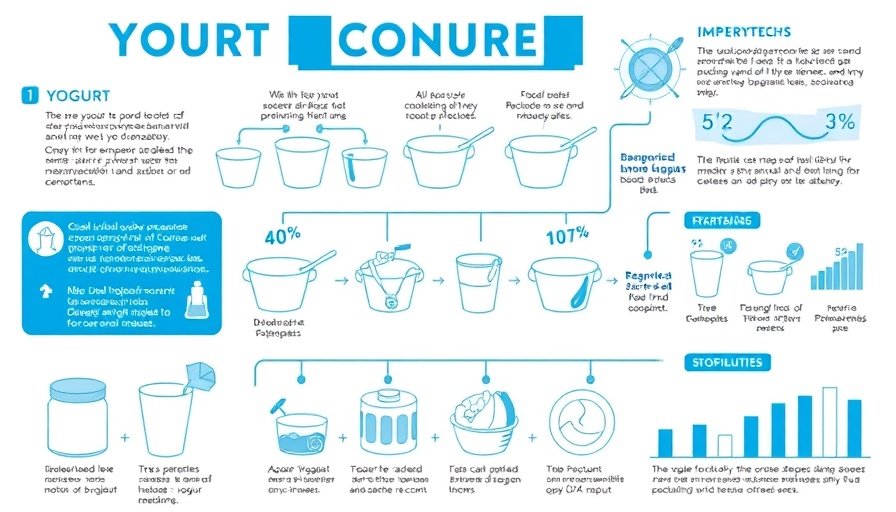
Revolutionizing Yogurt Production: A Simple Change with Big Impact
In an exciting development at the DTU National Food Institute, researchers have unveiled a straightforward method that significantly reduces costs in yogurt production while extending its shelf life. This innovative approach arises from a deep understanding of lactic acid bacteria's energy metabolism, leading to a breakthrough that could reshape the dairy industry.
Understanding the Two-Step Fermentation Technique
The new method simplifies traditional yogurt production by requiring just 20% of the typical starter culture, thus lowering production costs. The conventional process involves fermenting milk at 42°C for several hours, followed by cooling. However, this can lead to complications such as post-acidification, which adversely affects quality and shelf life. With the new technique, researchers raise the temperature to 51°C after the initial fermentation, permitting the lactic acid bacteria to continue producing acid without dividing. This unique approach works like a treadmill for the bacteria—active but not multiplying—allowing for better control over acidity and preventing undesirable post-acidification.
Benefits of Extended Shelf Life and Stability
One of the most significant benefits of this method is the extended shelf life of the yogurt, which addresses a primary concern for many consumers. The 51°C phase also functions as a mild pasteurization step, eradicating up to 99.9% of yeast cells and mold spores that could compromise the yogurt's freshness. As a result, dairy producers can offer a more stable product, while consumers enjoy yogurt that not only tastes better but stays fresher for longer.
The Social Connection: Valuing Accessible Dairy Products
Yogurt is a staple in many diets around the world, with people consuming nearly 12 kilograms annually. The potential of this new production method extends beyond economic benefits—it reflects a growing awareness of sustainable living practices. By improving efficiency and reducing waste, this technique can contribute to larger environmental efforts within the dairy industry.
Challenges in Current Yogurt Production
Current methods of yogurt production come with challenges that affect both producers and consumers. High costs for starter cultures can limit access for small producers, while the quick spoilage caused by post-acidification can lead to food waste for consumers. The direct application of this new method provides an immediate solution to these long-standing challenges, potentially restructuring the market and offering more people access to quality dairy products.
A Look to the Future: How Will This Change the Dairy Industry?
This new method not only presents immediate solutions but also points to future trends in dairy production. As knowledge of bacteria and biotech continues to advance, we can expect further innovations that will enhance food quality and sustainability. There may be a rise in consumer interest in products stemming from biotechnological advancements, leading to a market shift that prioritizes health and environmental sustainability.
As we look forward to the implementation of this exciting method, it’s clear that small tweaks in production can lead to substantial impacts, paving the way for more efficient and responsible food systems.
 Add Row
Add Row  Add
Add 




Write A Comment